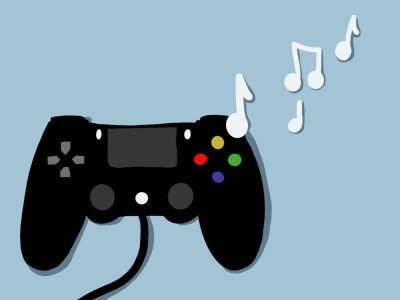In his 1989 book “America,” renowned postmodernist philosopher Jean Baudrillard claimed that Americans have a unique unwillingness to turn electronics off, from neon signs to light fixtures to televisions.
“The arrival of night-time or periods of rest cannot be accepted,” he explained, “nor can the Americans bear to see the technological process halted. Everything has to be working all the time, there has to be no let-up in man’s artificial power.”
At the risk of sounding annoyingly self-important, this quote seems to describe the YouTube cottage industry of 24/7 lo-fi hip hop livestream that has cropped up in the past few years. The format, pioneered by a user formerly known as ChilledCow, is simple: an animation of a cartoon character plays on loop as the video cycles through a massive playlist of relaxing instrumental hip-hop.
Now that the fad is a few years old, these streams have accumulated staggering amounts of uptime. In 2020, when a YouTube glitch temporarily brought ChilledCow’s channel down, the livestream displayed a total length of 13,165 hours — that is, one-and-a-half years.
As the streams’ titles and studying imagery indicate, they have a close nexus to productivity. Their purpose is to provide ambient background noise for viewers and keep them focused while they complete schoolwork or other tasks.
Just like instrumental hip-hop, video game music has been ushered into the realm of study music.
While some video game soundtracks are fast-paced and cinematic, many are relatively simple and ambient, and progressing through any game is probably more enjoyable than math homework. Regardless, game soundtracks can command your attention all the same, so the music often works to keep the player’s focus on the task rather than redirect it.
Premade videos such as “75 Minutes of Relaxing and Calming Nintendo Music Compilation” and “Video Game Music for Studying Special” compete with endless livestreams like “Video Game Study Lounge.” The similarity of the two genres even led to crossovers: video game music remixed with hip-hop drum beats, also available in hour-long compilations of “The Legend of Zelda” or “Final Fantasy” lo-fi mixes.

What does the spread of this relaxing music have to say about our society, especially as it affects the young people who consume the most YouTube? A lot of things, actually.
To begin, Baudrillard was correct to observe constant connection to our electronics as an expression of a triumphant artificiality — a desire to stay forever in an insulated, simulated world.
For the studious girl in the ChilledCow livestream, the seasons never change, she never goes to sleep and her work is never done. The sun does rise and set outside her window, but it conspicuously doesn’t affect her concentration.
It’s as if she has taken some kind of deal: She never rests, but there is no anxiety about anything — no alarms and no surprises. Perhaps this is what we want. After all, the other genre of music people use to study comes from video games, which we use to escape into a virtual world.
We are supposed to identify on some level with the character shown in these playlists and compilations. The lo-fi girl takes notes in front of a laptop that looks like the MacBook most of my fellow Boston University students bring to class. The “zelda and lofi” compilation shows protagonist Link as a wanderer above a sea of scenic video game fog, which is supposed to calm the viewer as much as it calms him.
The relaxing rhythm — literally — of the study-music genre soothes anxiety, the condition of a generation in a financially precarious position in the job market, still working through an endless heap of schoolwork and now gradually exiting a global pandemic to boot. As one journalist wrote for Vice, the lo-fi radio phenomenon is a “holistic alternative when the Xanax isn’t cutting it anymore.”
At least the silver lining is that video game music is finally getting the respect it deserves. Outside of obvious favorites such as “Pokémon” or “Minecraft” soundtracks, I recommend the masterclass in drum-and-bass put on by “Bomberman Hero” for the Nintendo 64 — or maybe the bubbly “shibuya-kei” pop of “Katamari Damacy,” which is as fun and esoteric as the game itself.






















































































































